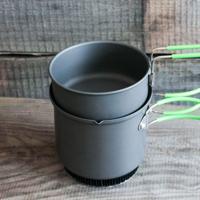Camping is a beloved outdoor activity that brings us closer to nature, and for many, preserving the environment is a top priority. As sustainability becomes more important, campers are seeking gear that minimizes environmental impact. One humble yet significant piece of gear is the tent stake. Let’s delve into the eco-friendly innovation of biodegradable tent stakes.
What Are Biodegradable Tent Stakes?
Biodegradable tent stakes are crafted from materials that break down naturally over time. Unlike traditional stakes made from metals or plastics, these environmentally-conscious alternatives aim to reduce the footprint camping leaves on nature’s landscapes. They offer peace of mind knowing that if forgotten or left behind, they won’t pollute the ground indefinitely.
Materials Used in Biodegradable Tent Stakes
Several materials can be used to create biodegradable tent stakes, each with varying environmental impacts and benefits:
-
Wood: Perhaps the most traditional, wood stakes can be carved from branches or commercially produced from sustainable timber sources. Natural wood stakes are effective, but their strength and durability may vary.
-
Corn-Based Plastics: These stakes are often made from polylactic acid (PLA) derived from corn starch. PLA decomposes under the right composting conditions, presenting a viable option that resembles traditional plastic in durability.
-
Potato Starch Composites: Potatoes might not be the first thing you associate with durability, but composites created from potato starch mixed with other natural fibers can be surprisingly robust and efficient.
-
Bamboo: Known for its quick growth and strength, bamboo is another eco-friendly material. Although not fully biodegradable in certain treatments, when left untreated, bamboo stakes decompose faster than their synthetic counterparts.
Considerations When Using Biodegradable Tent Stakes
Biodegradable stakes are a commendable choice, but there are a few details and practicalities to keep in mind:
-
Environmental Conditions: The rate at which these stakes degrade depends significantly on environmental conditions. In arid regions, decomposition will occur more slowly due to limited moisture.
-
Strength and Durability: While some biodegradable materials offer remarkable sturdiness, they generally aren’t as reliable as metal in rocky or hard soils. Assess the terrain to decide if these stakes meet your needs.
-
Waste Disposal: Not all biodegradable stakes will decompose effectively if simply discarded in nature. If possible, follow responsible disposal practices, like leaving them in designated composting areas.
-
Cost Efficiency: Often, these alternatives can be more expensive compared to conventional stakes. Evaluate your budget and camping frequency to see if they are a practical investment for your style.
Examples of Biodegradable Tent Stakes
Several companies are pioneering the sustainable camping movement with their biodegradable tent stake options:
-
Nature’s Path Gear: Offers a range of PLA-based tent stakes suitable for mild camping conditions. They’re designed to decompose back into the soil within a few seasons when exposed to natural elements.
-
EcoCamping Solutions: This company crafts stakes using a blend of bamboo and sustainably sourced wood, striking a balance between biodegradability and performance.
-
GreenStake Innovations: Known for their potato starch composite stakes, providing a sturdy yet environmentally benign solution. Their design offers a more robust grip in softer soils.
Further Reading and Resources
To understand more about the materials used in biodegradable products and their environmental impacts, consider visiting the European Commission’s report on biodegradable plastics. This site provides detailed insights into the science, benefits, and limitations of biodegradable materials.
Embracing sustainable camping gear like biodegradable tent stakes is a small yet impactful step towards protecting our beloved natural landscapes. While these stakes may not suit every camping need, they represent an important shift toward greener outdoor activities. By considering these products, we not only support environmental preservation but also inspire others to explore sustainability in their own camping experiences.




